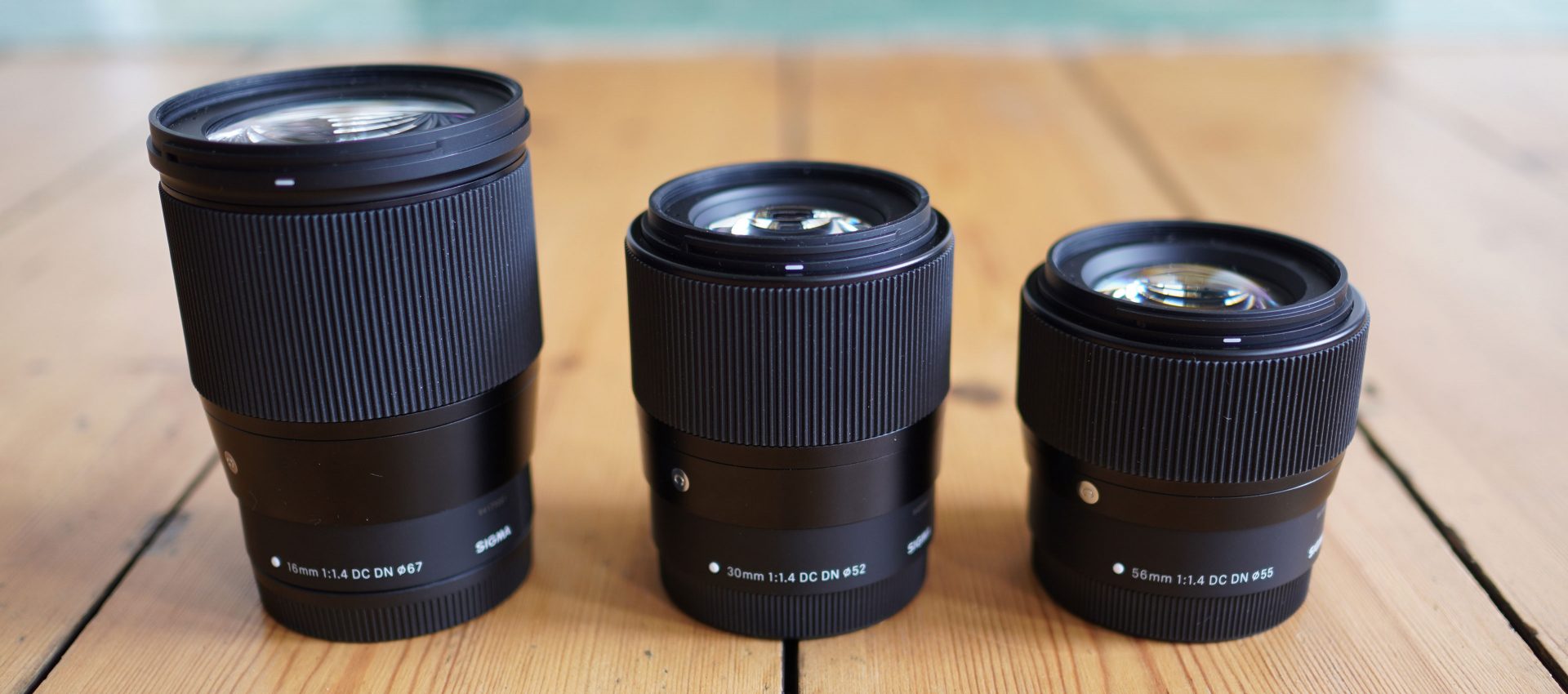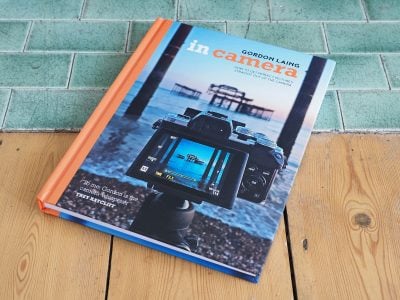Sigma saves Canon EOS-M
-
-
Written by Gordon Laing
Canon launched its EOS M APSC mirrorless system back in mid-2012 but despite a selection of increasingly compelling bodies, the native lens selection has been somewhat neglected – at the time I wrote this article in early 2020, Canon had produced just eight native EF-M lenses, only one of which – the most recent 32mm f1.4 – could be regarded as aspirational.
Canon’s excuse has always been that you can adapt any of the massive collection of existing EF and EF-S DSLR lenses, but in terms of size and performance, native is best which means EOS M camera owners simply need more EF-M lenses to come out. With Canon concentrating on their full-frame mirrorless RF format nowadays though, jilted EOS M owners have turned their hopes to Sigma, praying they would release EF-M versions of their DC DN triplet of APSC primes, previously only available in Sony E and Micro Four Thirds mounts. Salvation came with an announcement in October 2019 and I’ve now tested the Sigma threesome that the EOS M faithful have long been waiting for.
It’s amazing to think Canon’s meagre EF-M catalogue of just eight lenses features only three primes, of which just one has a bright f1.4 focal ratio. The most recent EF-M 32mm f1.4 is certainly a lovely lens and as I discovered in my Canon EF-M 32mm f1.4 review, was arguably the only native EF-M lens to exploit the potential of the EOS M format, especially the higher resolution sensor introduced on the EOS M6 II. But with Sigma’s adoption of the mount, the choice of f1.4 primes for EOS M owners has literally quadrupled. In the following video I’ll tell you all about them and show you how they compare to alternatives from Canon; if you prefer a written version, just scroll beyond the video!
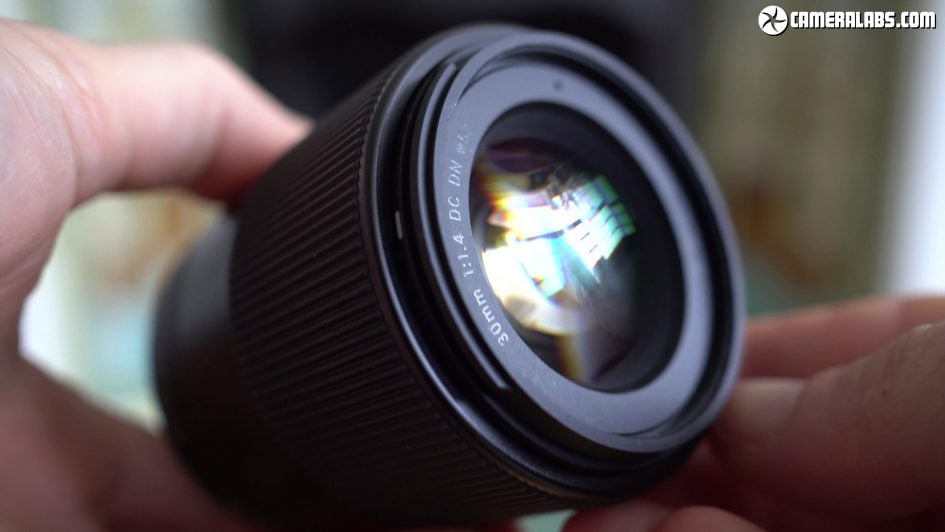
Above: EOS M owners looking for standard coverage now have an alternative to Canon’s own 32mm f1.4 with the Sigma 30mm f1.4 DC DN that at around $340 or 250 pounds is roughly two thirds of the price too. The Sigma 30mm is a compact lens: 65mm in diameter, 73mm long, weighs 270g, has a 52mm filter thread and a closest focusing distance of 30cm.
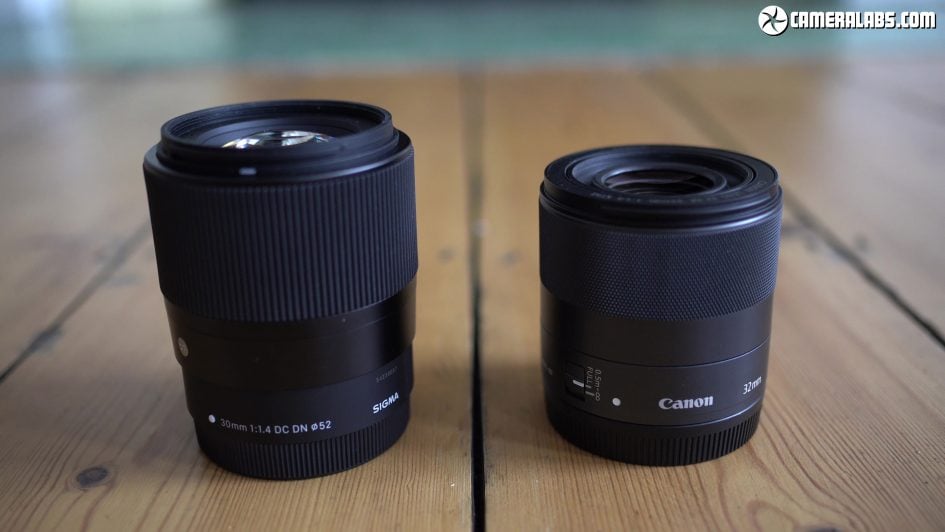
Above: Canon’s EF-M 32mm f1.4 is a little smaller still at 61mm in diameter, 57mm in length, weighs 235g, has a narrower 43mm filter thread and noticeably closer focusing of 23cm. But again it’s pricier than the Sigma.
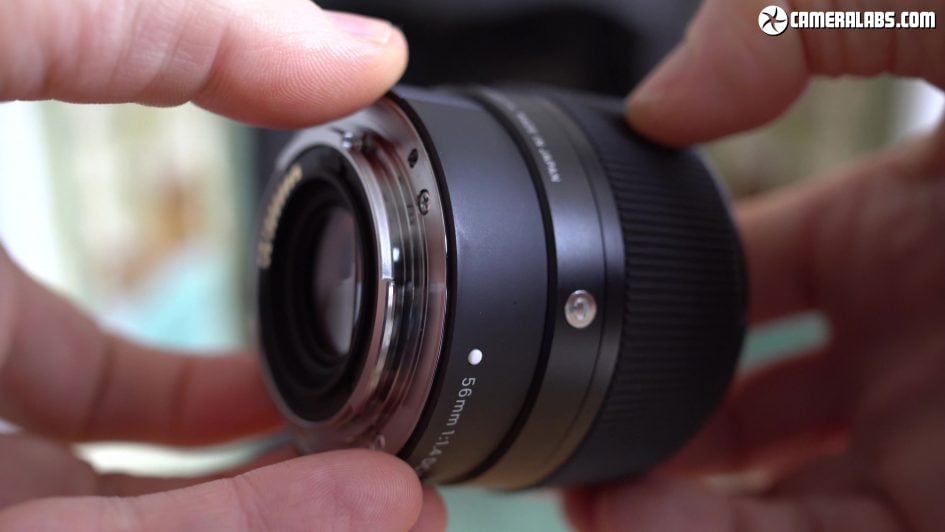
Above: If you fancy short telephoto coverage for portraits or details, the Sigma 56mm f1.4 DC DN at around $480 or 350 pounds now provides a native alternative to adapting one of the many 50mm EF DSLR lenses. It’s similarly compact: 67mm in diameter, 60mm long, weighs 280g with a 55mm filter thread and closest focusing of 50cm.
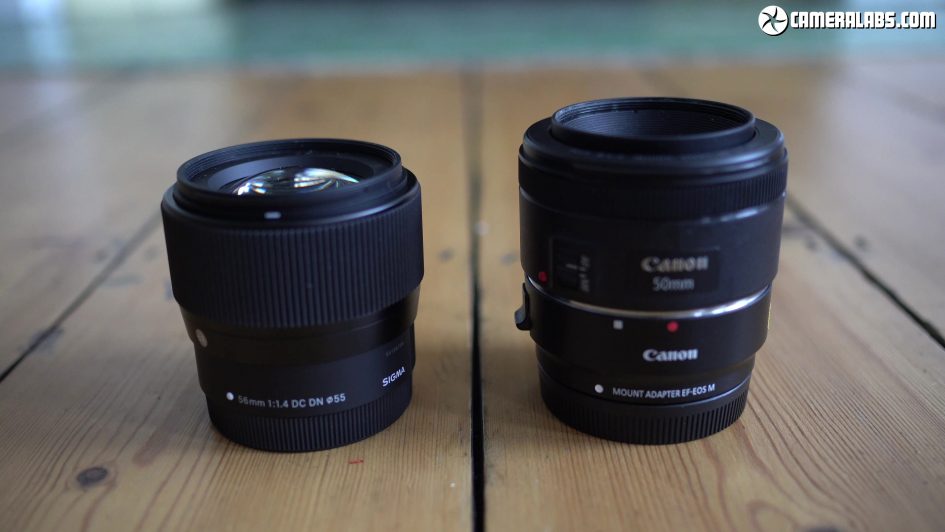
Above: Compare it against an adapted Canon EF 50mm f1.8 STM which, with the adapter, is 69mm in diameter, 67mm long, weighs 270g, has a 49mm filter thread and a closest focusing of 35cm. It’s cheap too costing around 125 dollars or pounds, although you’ll also need the adapter which costs about the same again.
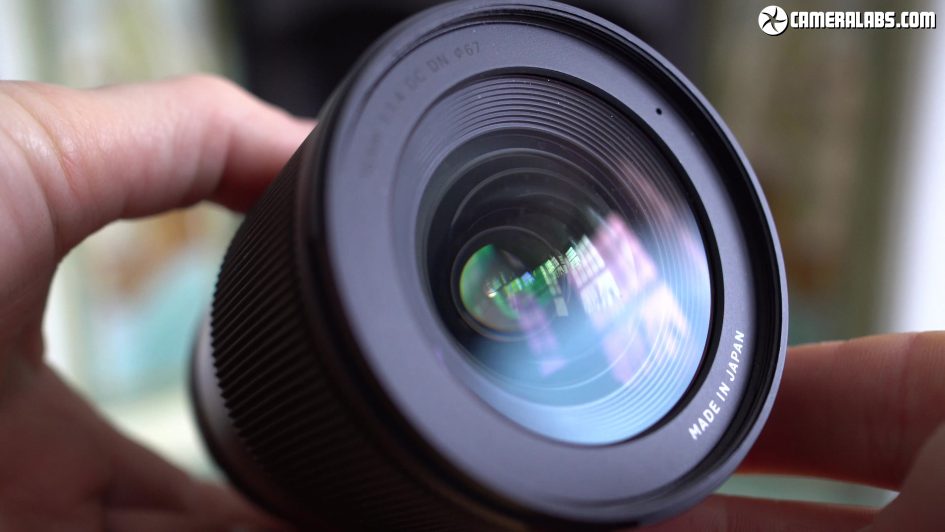
Above: Meanwhile for those who desire decent wide-angle coverage with a bright aperture, the Sigma 16mm f1.4 DC DN at around $450 dollars or pounds delivers a unique proposition with no close rival in the EOS M mount, whether native or adapted. It’s one of the larger lenses for the system, measuring 72mm in diameter, 92mm long, weighing 405g, with a 67mm filter thread and focusing down to 25cm. It’s worth mentioning the only other native 16mm f1.4 for an APSC mirrorless system is Fujifilm’s version for its X-series cameras which costs 780 pounds or around 1000 dollars, making it roughly double the price of the Sigma; finger’s crossed Sigma produces X-mount versions of these three primes soon – it’s not like we’ve not been asking for them!
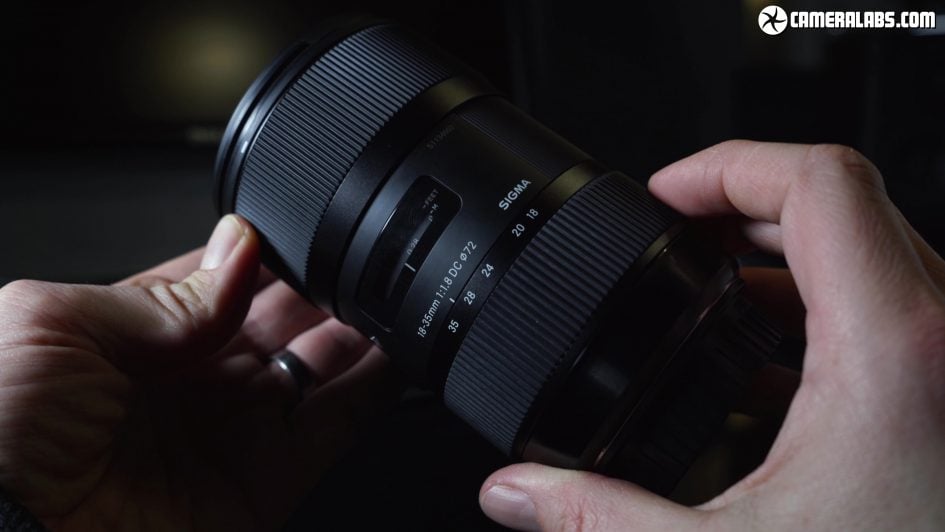
Above: Arguably the closest rival to the 16mm f1.4 for EOS M owners is to adapt Sigma’s own 18-35mm f1.8 zoom in the Canon EF DSLR mount that’s neither as wide nor bright and costs half as much again, although obviously it has the benefit of zooming from wide to standard focal lengths, potentially offering an alternative to the 16mm and 30mm models – but again it’s adapted, not native.
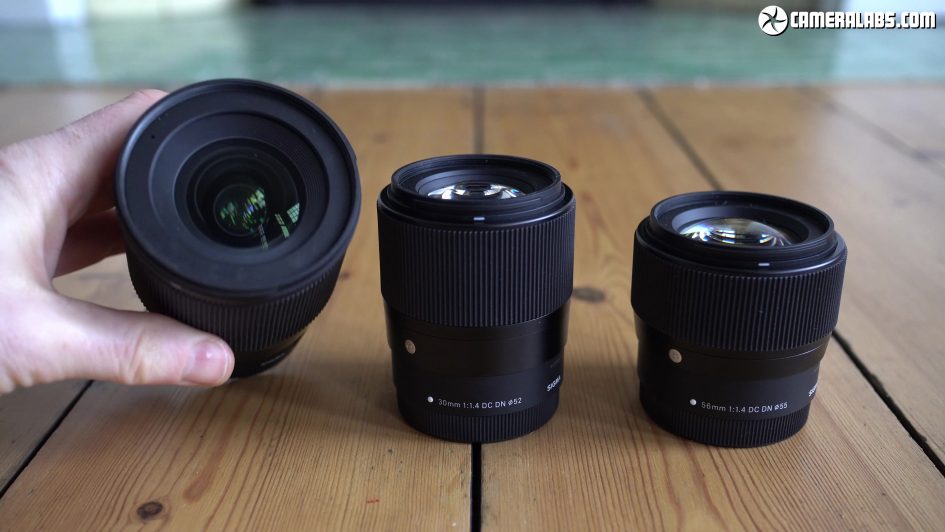
Above: The three new Sigma EF-M primes share several things in common: they all sport a bright f1.4 focal ratio that’s ideal in low light for for creating shallow depth-of-field effects.
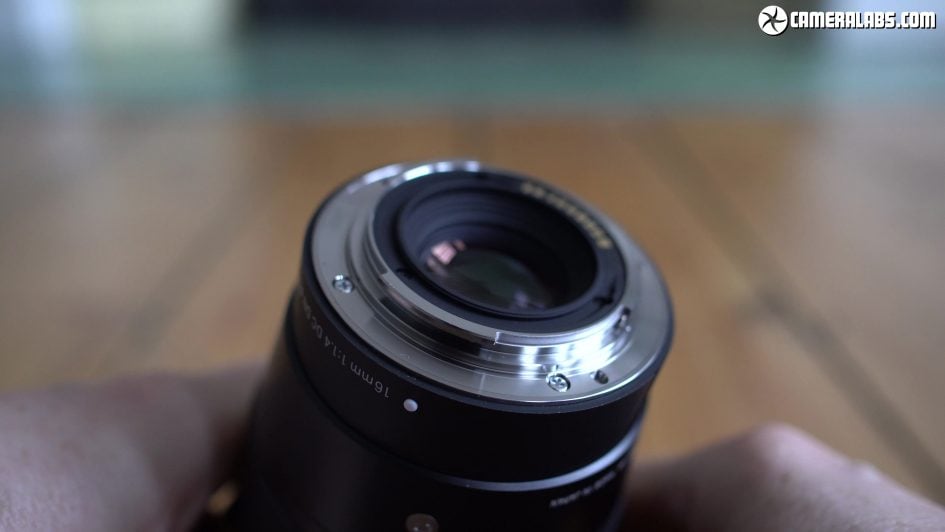
Above: They claim to be sealed against dust and moisture, something that’s so far eluded all of Canon’s EF-M lenses, although I couldn’t see a rubber O-ring on the mounts.
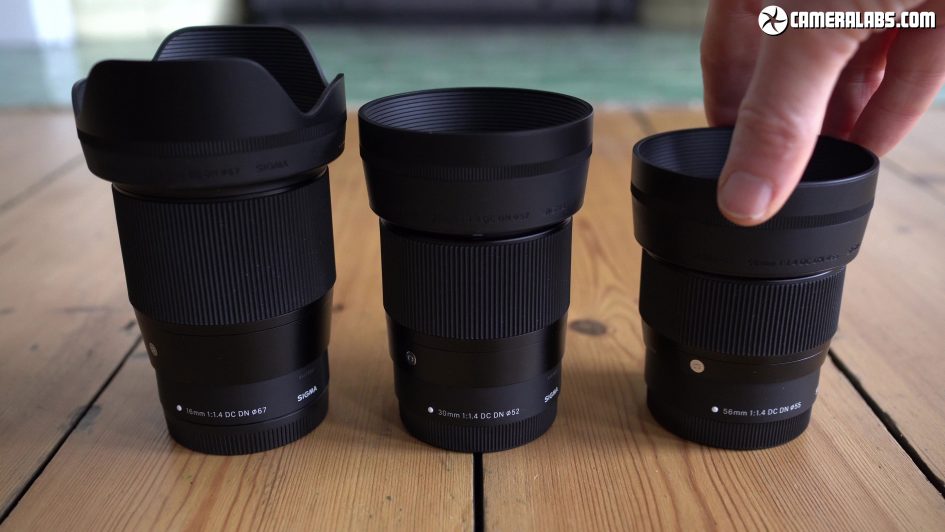
Above: They all come supplied with lens hoods, an accessory that Canon charges for on non-L lenses.

Above: They all work with Canon’s Servo AF as well as face and eye detection, while additionally including built-in profiles to work with in-camera correction and provide full EXIF information.
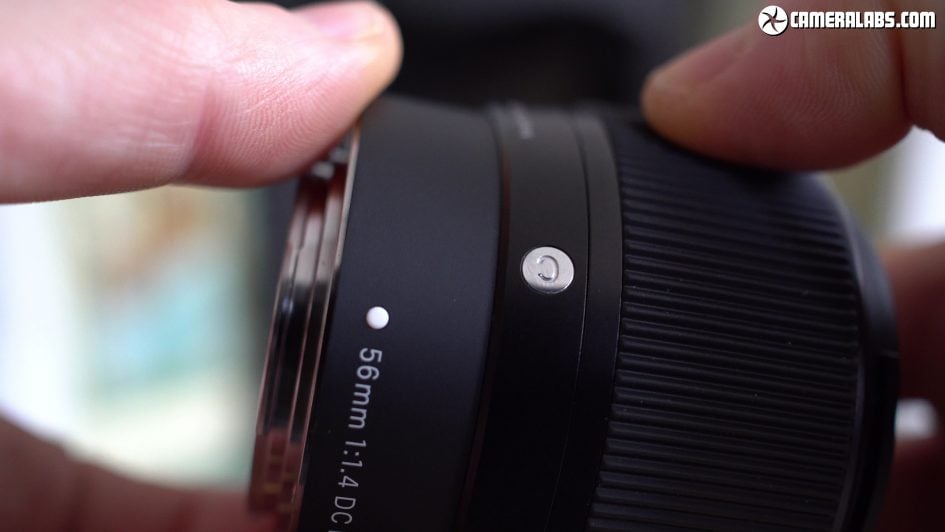
Above: They’re all members of Sigma’s Contemporary series, and if you get bored of EF-M, you can have the mount converted – for a fee – to Sony E or Micro Four Thirds if you prefer.
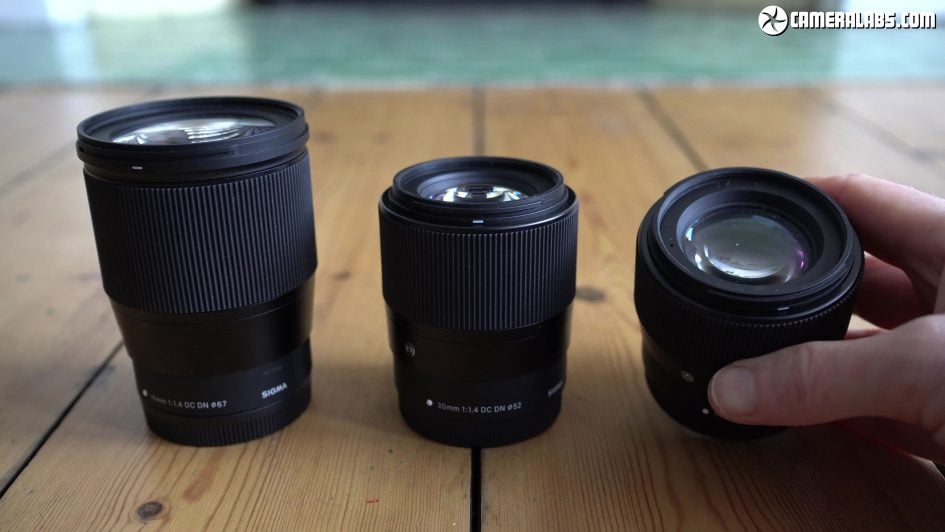
Above: Sadly none of them feature optical stabilisation which means – in the absence of sensor-stabilisation in Canon’s bodies so far – you’ll need to hold steady with a sufficiently fast shutter speed, or employ digital stabilisation for movies.
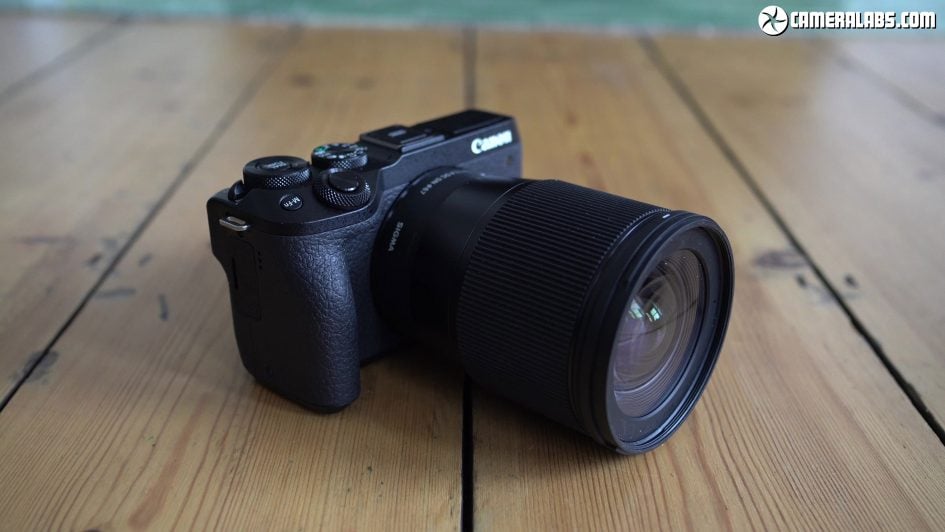
Above: Physically the 16mm is the largest and heaviest, and while the 30mm and 56mm weigh roughly the same as each other, the 56mm is the smallest of the set.
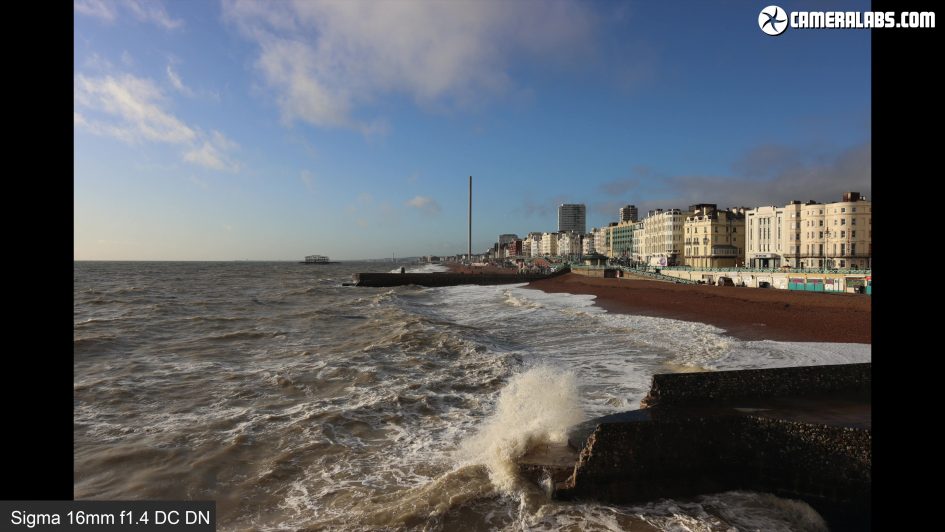
Above: In terms of coverage, the 16mm works out at 25.6mm equivalent when mounted on an EOS M body with their 1.6x field reduction, providing decent wide-angle coverage.
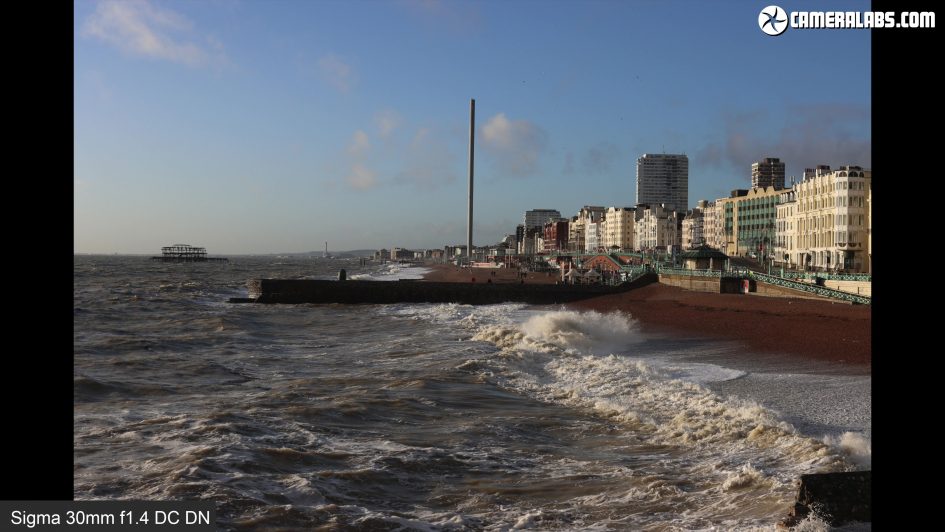
Above: Next the 30mm delivers a 48mm equivalent that essentially delivers standard coverage making it an ideal general-purpose lens.
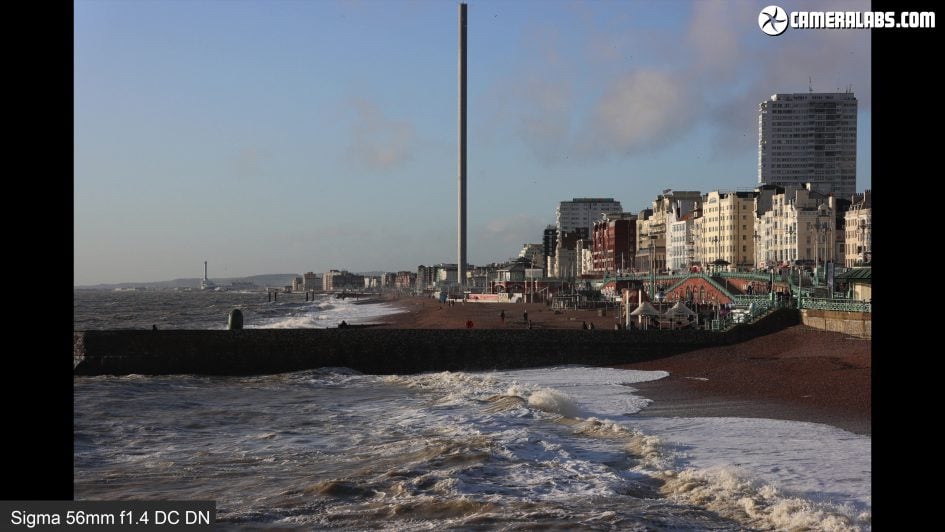
Above: And finally the 56mm becomes 90mm for short telephoto coverage that’s perfect for details or portrait work.

Above: Their bright focal ratios allow for shallow depth-of-field effects even with the widest 16mm which you can see here near to its closest focusing distance.

Above: Now for the Sigma 30mm again near to its closest focusing distance.
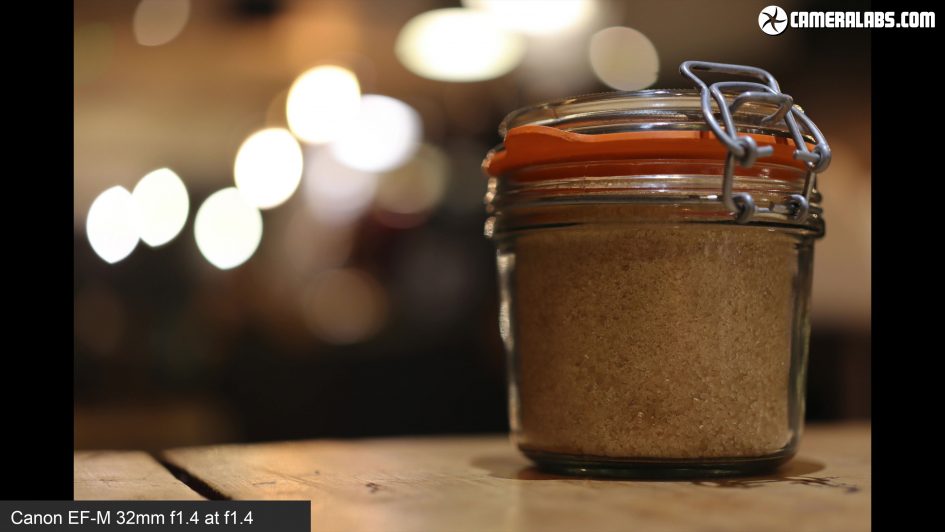
Above: for comparison, here’s the Canon EF-M 32mm f1.4 which renders sharper-edged bokeh blobs with a more symmetrical cats-eye – which do you prefer of the two?

Above: And now for the Sigma 56mm which near to its closest focusing will deliver large bokeh blobs for you.

Above: And for comparison here’s Canon’s EF 50mm f1.8 which thanks to its shorter focal length and slightly smaller aperture delivers smaller blobs, albeit still plenty of blurring if you want it.

Above: Here’s another test for the bokeh fans out there, starting with the Sigma 16mm f1.4. I love being able to have a shallow depth-of-field with a wide lens as you get a nice big field of view, but still with some subject separation.

Above: Now for the Sigma 30mm f1.4 for a slightly tighter view and some lovely blurred blobs in the background.

Above: For comparison here’s the fractionally longer Canon 32mm f1.4 from the same distance – again which do you prefer?
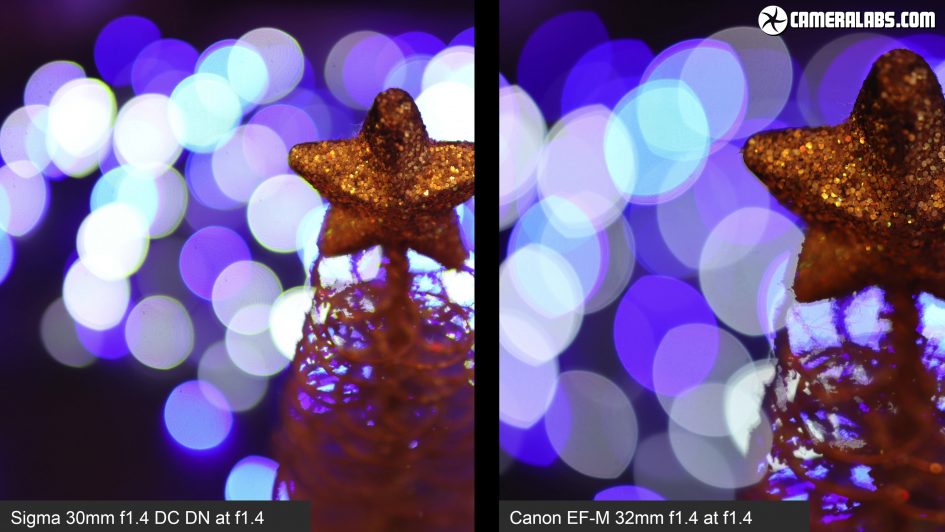
Above: Here’s another shot with the Sigma 30mm f1.4 at its closest focusing distance, and now here’s the Canon as close as it’ll focus, which lets you get much nearer to the subject. The subject and the blobs are larger, but again see how the style of the Canon blobs is more sharply defined and less rounded than the Sigma. It’s all down to personal preference.

Above: And finally here’s the Sigma 56mm delivering maximum festivities here with mostly rounded, softened blobs.

Above:Here’s the Canon 50mm f1.8 STM for comparison at the same distance where again the shorter focal length and smaller aperture result in a smaller subject and blobs from the same distance.
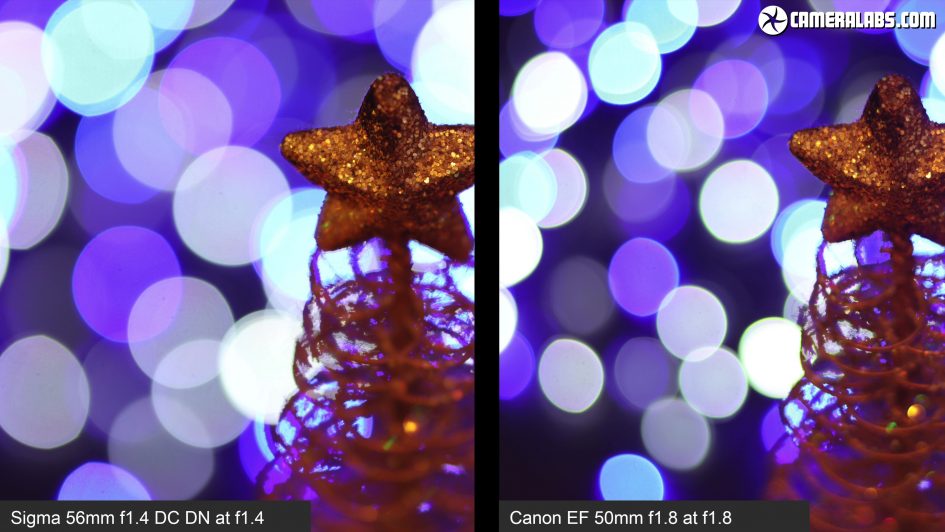
Above: again notice Canon’s more defined rendering style which may or may not be to your taste.
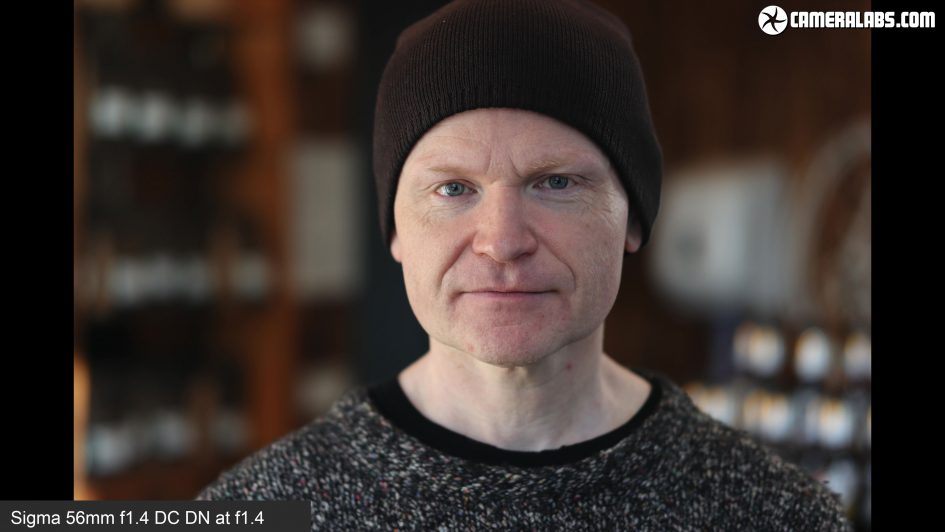
Above: while we’re talking about rendering, here’s a portrait comparison with the three Sigmas, photographed by Ben Harvey – check out his channel for some really cool videos – cheers Ben! Starting with the Sigma 56mm which is designed for portraiture, you’ll enjoy the flattering perspective from the short-telephoto focal length, coupled with the chance to blur the background with the f1.4 focal ratio. At these longer focal lengths, it’s easy to frame the shot without any distractions.
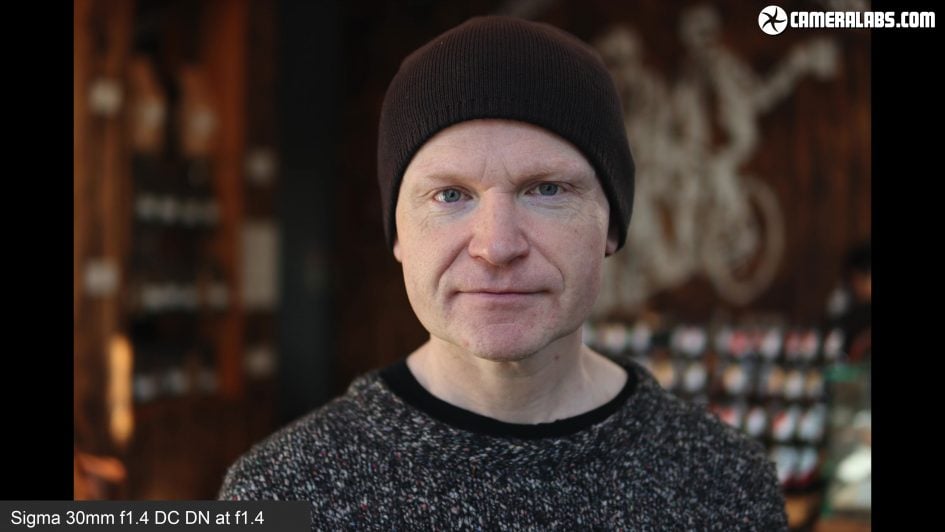
Above: If you’d like to see more of the environment around the subject though, then shorter focal lengths are preferable. Here I am with the Sigma 30mm which delivers standard coverage close to 50mm. The perspective is different and you should be careful not to get too close to your subject, but the result can still look great and again there’s plenty of opportunity for blurring.
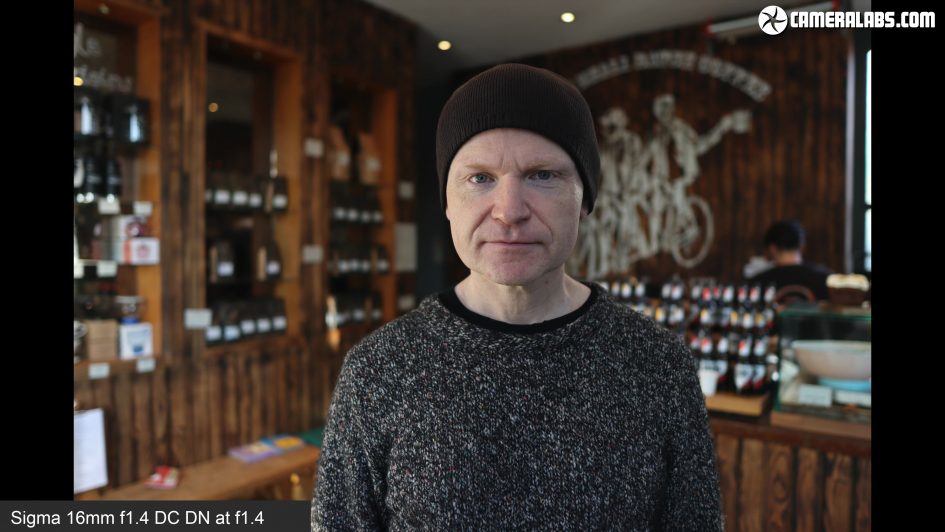
Above: And finally here’s the Sigma 16mm, a lens you may assume is too wide for portraiture, but if you’re careful with framing and distance, you can minimise the distortion and enjoy even more of the surroundings. Now you can clearly see I’m in a cafe, so it’s useful for environmental portraiture, and there’s still some potential for a little blurring too. It’s actually the best of the three for vlogging as I’ll show you later. But first let’s take a look at detail.
For my full results, comparisons, focus tests and movie performance, please watch my video review near the top of the page. Thanks!
Check prices at Amazon, B&H, Adorama, eBay or Wex. Alternatively get yourself a copy of my In Camera book, an official Cameralabs T-shirt or mug, or treat me to a coffee! Thanks!